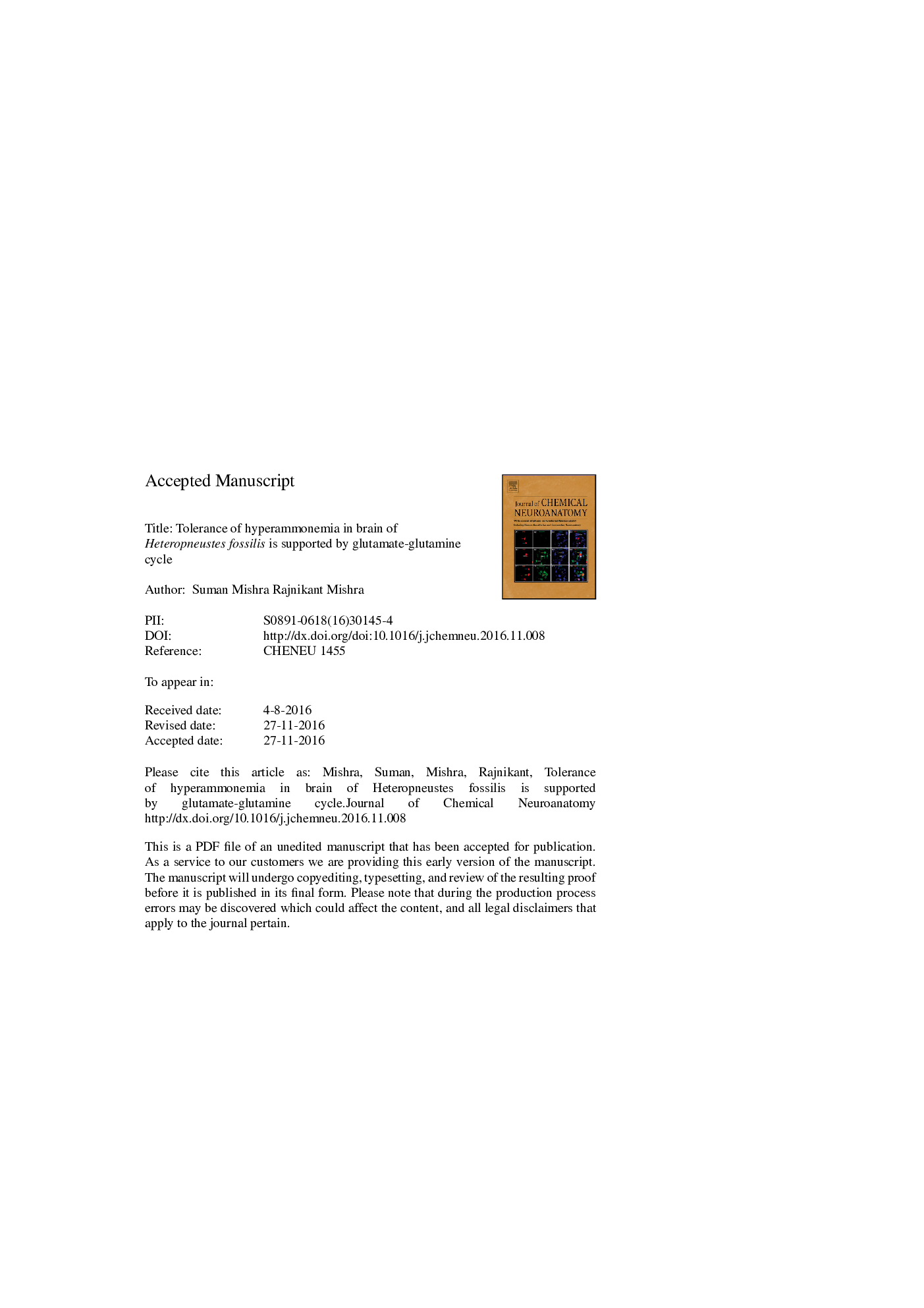| Article ID | Journal | Published Year | Pages | File Type |
|---|---|---|---|---|
| 5512702 | Journal of Chemical Neuroanatomy | 2017 | 22 Pages |
Abstract
This report presents analysis of molecular switches associated with tolerance to hyperammonemia in Heteropneustes fossilis because it tolerates about 100-fold more ammonia than mammals. Brains of Heteropneustes fossilis exposed to 100 mM ammonium chloride were dissected after Zero hour as control, 16 h and 20 h exposure. The status of neuron and glia were analysed by Golgi staining, Luxol Fast Blue, and Nissl's staining. The expression patterns of genes associated to homeostasis of neuron and glia, management of oxidative stress and inflammation, ammonia metabolism and brain derived neurotrophic factor were analysed through reverse-transcriptase-polymerase chain reaction. After 20 h of hyperammonemia glia were more degenerated than neurons. The expression of mRNA of lactate dehydrogenase (Ldh), super oxide dismutase (Sod), catalase (Catalase), arginase-I (Arg I), inducible nitric oxide (iNos), glutaminase (GA), and brain derived neurotrophic factor (Bdnf) was up-regulated than the control. The levels of mRNA of Arg II, glutamate dehydrogenase (Gdh), glutamine synthetase (GS), glial fibrillary acidic protein (Gfap), proliferating cell nuclear antigen (Pcna) and S100β were down-regulated than control due to hyperammonemia. It appears first observation on impact of hyperammonemia on the status of neurons, myelination and glial cells in brain of Heteropneustes fossilis by Golgi staining, Nissl's and Luxol Fast Blue staining. The distribution of ammonia and glutamate metabolising enzymes in brain supports multi-centric mechanism (s) of regulation. The expression of Arg I and Arg II gets inversely regulated and glutamate-glutamine cycle also operates in Heteropneustes fossilis against hyperammonemia in brain.
Related Topics
Life Sciences
Biochemistry, Genetics and Molecular Biology
Biochemistry
Authors
Suman Mishra, Rajnikant Mishra,
